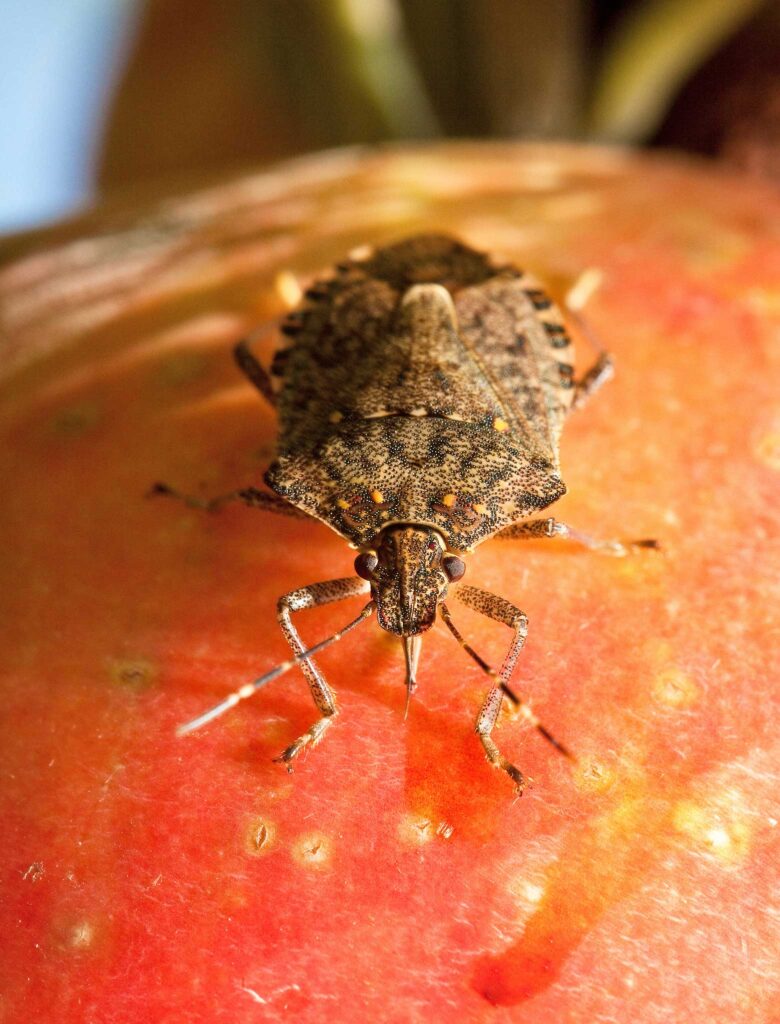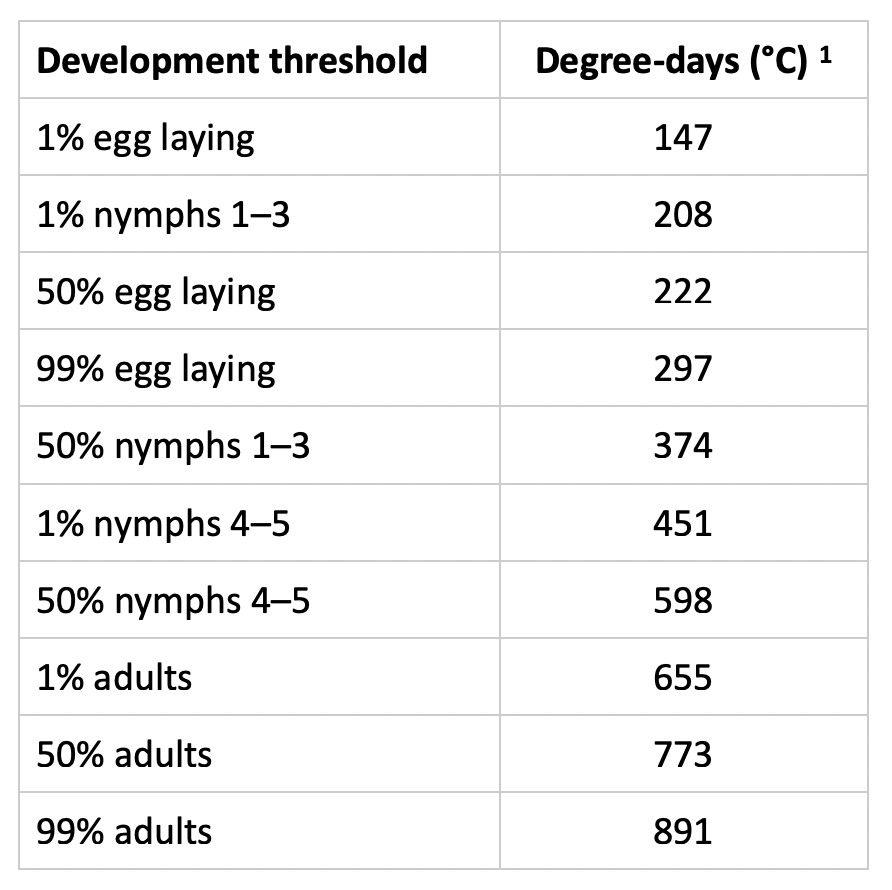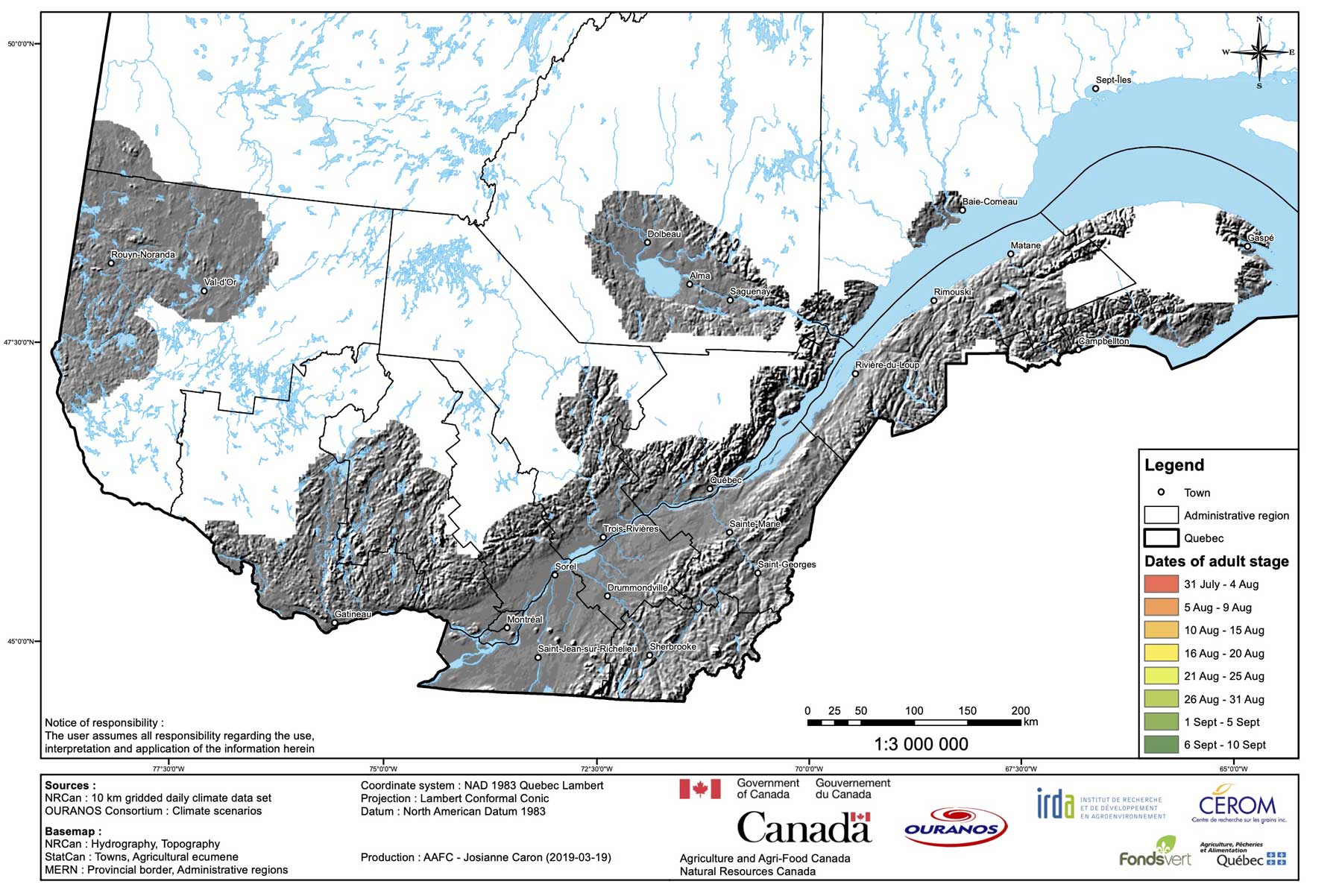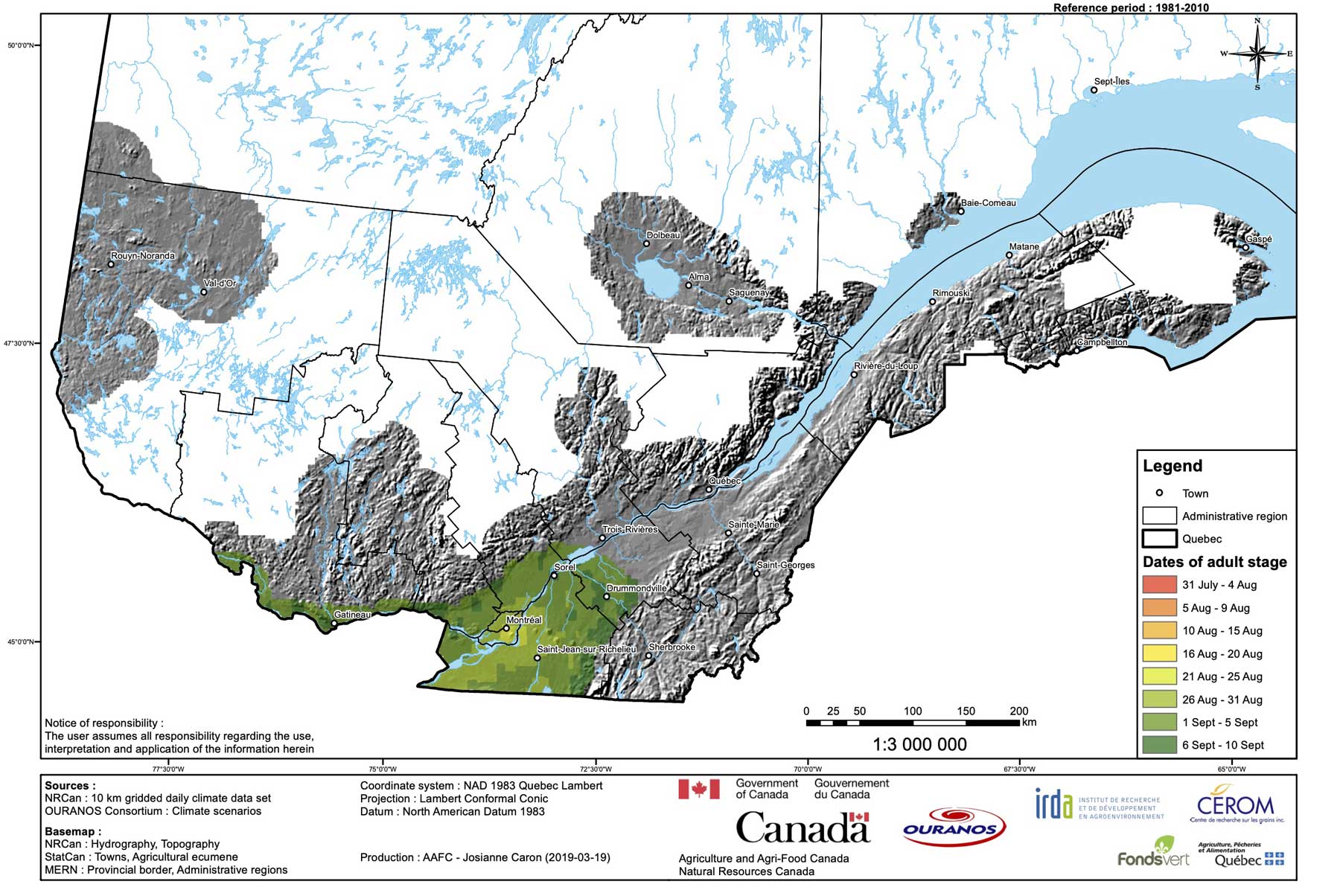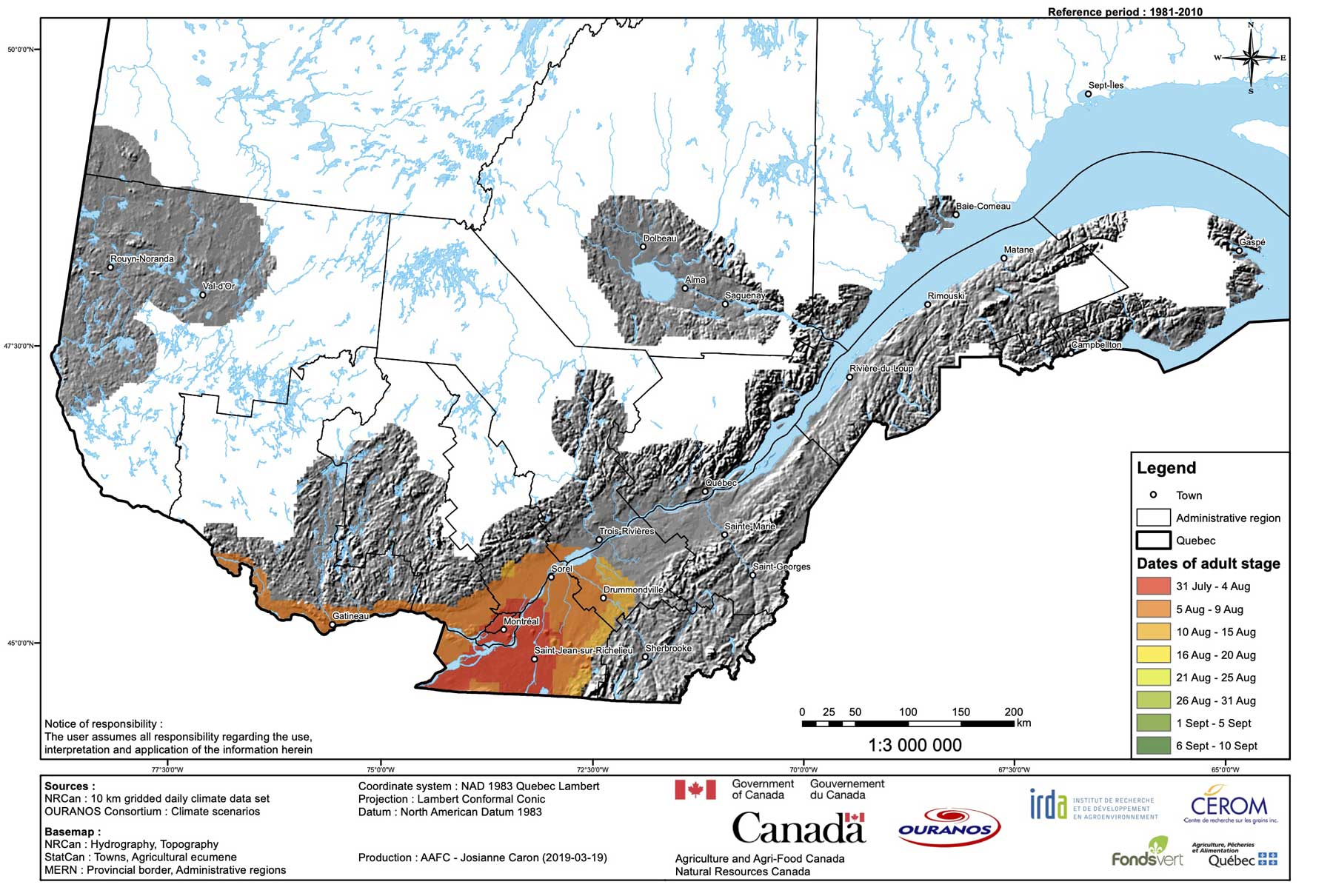Native to Asia, the brown marmorated stink bug has been accidentally introduced to several continents, including Europe, Oceania and North America. Since its appearance in Pennsylvania in 1996, this bug has rapidly expanded its range; the species is now found in more than 40 U.S. states. In Canada, it is considered to be widely distributed in British Columbia in the Lower Mainland and in the Okanagan region. However, populations appear to be very irregular, though they are abundant in places. In Ontario, this bug has been found on trees or sheds near crops, but no infestation has yet been reported. In Quebec, it was identified for the first time in 2014, first in an orchard in the Franklin region and then in the Montreal region in 2016, where nymphs and adults have been captured every year since then.2 The species is constantly dispersing in North America, facilitated by human movements and trade (transport of contaminated plants, among others). During winter, it takes shelter in litter in fields and orchards. As it also enters houses, it represents a nuisance for residents.1,3
The brown marmorated stink bug attacks many plant species, including soybean, corn, sugar maple and a wide variety of fruits (apples, peaches, berries, citrus, tomatoes, etc.). As spring arrives, the combination of higher temperatures and the lengthening photoperiod promotes the emergence and reactivation of adults, which exit their overwintering sites. In forests, these sites include dead trees, while in urban areas, the brown marmorated stink bug overwinters in homes.

